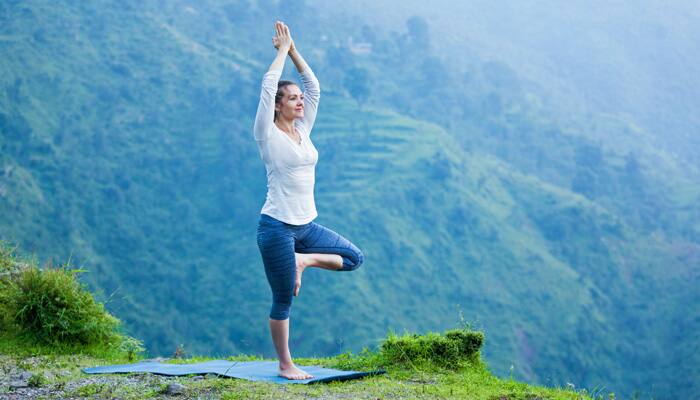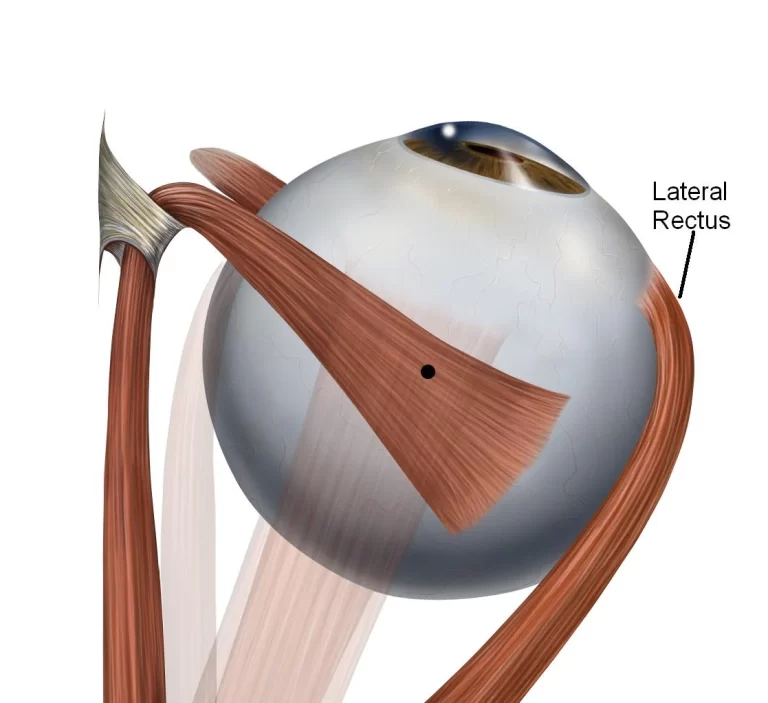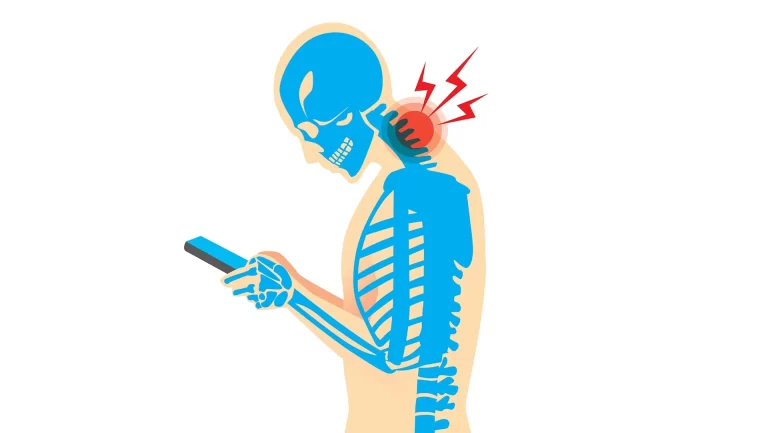Vrikshasana (Tree Pose)
What is Vrikshasana (Tree Pose)?
In Sanskrit, Vriksa means Tree, and the exercise of this position essentials people to balance on one leg while the other leg is twisted and the foot is placed center of the groin of the weight-bearing leg. Illustrative, the tree is said to be secure and well-grounded, as it extends both upwards and downwards raising stability.
Therefore, in the final posture in Tree Position (Vrksasana), the flooring action of the weight-bearing foot (representing the roots of a tree flooring) and the extending of the arms above the head (representing the limb growing upwards), are the key aspects to obtaining this balancing position right. To many, this hip opening position can be a demanding exercise. Therefore, to inspire people to gain agreeable in this learner position, yoga trainers can establish it with the support of the wall or even a chair.
Originally, for too many peoples this position can be very disturbing as it essentials awareness and focus to endure stability and in balance, and many would find this hard. But, to control this summons, it is important for yoga trainers to regularly give commands to floor the foot and keep the pelvis in the objective position. If peoples have too much of a posterior or anterior pelvic bend, then conducting they to conduct the pelvis to a neutral position before even raising the foot is critical.
Balancing in Vrikshasana (Tree Position) comes from reality aware of the stability in the pelvis and shoulders, and many may not be aware of this. While supporting more attention to balancing, charming the muscles of the legs, and lengthening the spine, the fundamental target areas like the pelvis and shoulders can be misheard. While yes, the exercise does help conduct strength in the hamstrings, hips, quadriceps, knees, and ankles, yet at a precise level, it conducts security in the pelvis.
Vrksasana has appraised a base position as vrksasana variations can be acquired from this position. Vkrasasana helps boost energy in the body and the prospect can be included in the flow yoga series.
Vrksasana – to increase the energy graduation from the Root Chakra to the Crown Chakra
Vrksasana included in the exercise of Hatha Yoga is a sthira sukham asana. Balancing on one leg, peoples need to bring out their attention towards their body, mind, and breath, to endure strong and stable. Considering the nature of a tree, Sita, and the yogins, people should be inspired to endure focused, calm, and constant with their body-breath connections, moving slowly towards their thoughts. Rooting the feet dynamically like trees, reality patient and dedicated like Sita, and actuality strong in the mind like the rishis or yogins, peoples can also conduct such contrast into their exercise.
Additionally, just like how a tree grows upwards, rooting from the Earth, and downwards end to the Earth, our exercise of Vrksasana should also help the flow of prana (energy force) moves upwards from the Muladhara Chakra to the Sahasrara Chakra, and back downwards to the Muladhara, structure a sense of balance in the mind and body.
What are the Health Benefits of Vrikshasana (Tree Pose)?
Vrksasana (Tree Position) is an amalgamation of balance, stability, strength, stretch, and a complete focus operation exercise. When done in the right way, this exercise has many benefits, and these are explained below:
Stretches, Strengthens, lengthens: Vrksasana stretches and strengthens the muscles of the arms, shoulders, legs, hips, back, and core. At the learner level this hip opener helps to conduct stability in the pelvic girdle while composing the body for positions like Half Lotus Tree Position (Ardha Padma Vrksasana), Half Chair Position (Ardha Utkatasana), and the likes.
Flexibility and Range of Motion: This balancing position which involves the joints of the hips, knee, ankles, and shoulders are all involved together helping in keeping the body steady. The lateral rotation of the hips, the extension of the knee, and the upward rotation of the shoulders with time prepares for counter movements in other positions like Garudasana (Eagle Position), Utthita Hasta Padangusthasana (Standing Hand To Big Toe Position), Natrajasana (Dancer’s Position), and many more. Thus, with time, the exercise of Tree Position helps to obtain better mobility in the joints and muscles involved, acting as preparatory positions for other positions.
Chest, Diaphragm, and Breath: During the exercise of Tree Position, when the arms are stretched upwards, there is the operative use of the chest, rib cage, diaphragm, and intercostal muscles (breathing muscles). The active use of these needs in taking in more air into the lungs, thus also checking the systematic use of the lungs. Anyway, for some people, if lifting the arms above the head is hard, then yoga trainers can have them conduct their hands at the chest in Anjali Mudra (Namaskar Mudra). With the coherent use of the diaphragm and lungs, breathing too is upgraded, impacting the stability and balance while in the position.
Awareness and Focus (Concentration): According to yoga, paying observation to your breath helps combine body and mind and create a condition of physiologic equilibrium. Peoples continue a straight look during the position. This aids in mindfulness. To realize a fine line between balance and strength, people should conduct their awareness originally to their pelvis and shoulders, as this is the thrust of the position. With the pelvis stable, the awareness can move towards the modification of the body like the legs, core, back, and arms to complete the posture. With time, upgraded focus and application can help obtain confidence in other demanding balancing positions.
Alignment and Posture: Balancing in this position without disturbing the prana flow essentials having a clear perception of the alignment aspects. The placing of the foot in the groin, the external movement of the hips and knees, the grounding action of the five toes with all of them pointed in anterior, the placing of the hips and pelvis, the alignment of the shoulders with the hips and foot, and the lifted hands with the shoulders and hips, together help in completing the position to obtain the maximum benefit. When all of these come together, the position looks good and balancing becomes easier. With repeated exercise, the spine extends, and the hips and pelvis are stable and aligned, adding to an overall good posture. When the posture is improved, breathing is improved too.
Balance and Emotion: When it comes to teaching balance, your mental condition is far more important than your physical capability. Your body is likely to be confused if you are nervous or your mind is diverted. Thanks to the Tree Position helps conduct balance in the physical body and the mental state of mind, and can be appraised as a meditative exercise. Comprised in teens yoga, or desk yoga (by counting the chair variation), it can help unwind and destress, by conduct all the awareness to the breathing.
Energizing, De-stressing, Relaxing: Since, most of the joints and muscles are occupied in the exercise of Vrksasana, especially the chest, core, back and pelvis, the circulate of energy (prana) is increased. With the modulation of breath, the mind is administered, calming the nervous system, and flushing out the undesired energy out of the body. With the outflow of unwanted energy (Apana Vayu), there is room for affluence of prana, which can smoothly travel to the moderate rest of the body. The increased prana flow conducts balance in the body-breath-mind and a sense of calmness deep within when one feels standing below a tree. It teaches people how to be strong and flexible at the same time, how to be rooted without being rigid. Since a tree must be able to oscillate in the wind, feeling rooted in your feet is important.
Stimulation and Organs: As a contemplative position keeping the gape at one point (peoples can also be inspired to exercise this with eyes closed, if they are comfortable) and with breath awareness, the Third Eye Chakra is operated, which is known as the source of natural wisdom and creativity. The pressure at the lower back/ spine and with the grounding operation of the pelvis and foot, the Root Chakra is stimulated, which is responsible for stability and reliability. At a precise level, the charming of the core muscles influences the internal organs, stimulating them. Additionally, the existence of a hip opener with the appeal of the pelvis, it influences the reproductive system, thus helping women with infertility delivery, conducting hormonal balance.
Benefits for Women: Generates a feeling of lightness which is helpful during pregnancy or menstruation. Stretches the calves and helps prevent leg stiffness and restlessness of the legs during pregnancy.
Preparatory Pose: After mastering the Tree Position, other next-level demanding positions such as Tree Position Side Bend, Tree Position Side Bend Hand Foot, Revolved Tree Position Elbow To Knee, to name a few.
What are the Preparatory poses for Vrikshasana (Tree Pose)?
Tree Position (Vrksasana) comes below the category of Balancing Standing Yoga Positions. Balancing the body on one leg is essential no doubt exercise, but also a necessary one to master similar and simpler yoga positions. This position is often done at the end of an asana class to appease any tension that may be enduring. It is therefore exercised after asanas, especially standing asanas, or at the end of class after meditation or pranayama, where the the body may need a bit of stretching. However, it can be exercised at any other time also. Some positions to construct include:
- Urdhva Hastasana (Palm Tree Position)
- Standing Yoga Seal Position (Dandayamana Yoga Mudra)
- Upward Salute Side Bend Position (Parsva Urdhva Hastasana)
- Tadasana (Mountain Position)
- Baddha Konasana (Bound Angle Position)
- Utthita Trikonasana (Extended Triangle Position)
- Virabhadrasana II (Warrior II)
- Arm movements in standing
How to Perform Vrikshasana (Tree Pose)?
Given below are the step-by-step instructions to follow for the exercise of Vrksasana:
Start the exercise standing at the short end of the mat, with feet about 1-2 inches apart. Grounding the feet, start to raise the knee caps, appealing the thighs by affecting their insides towards each other. Conduct your focus to your pelvis and keep them objective (this action helps in not overworking the lower back and hips, upgrades in deeper abdominal breathing, and permits for better blood flow downwards and upwards).
Now, operating your awareness towards the upper body, lengthen the anterior body by appealing to the core, raising the pelvis upwards, raising the psoas muscles, widening the chest and rib cage, taking the shoulders beyond and away from the ears, having the neck moderated, and finally lengthening the arms downwards towards the side of you. Endure here in Mountain Position Variation Feet Hip Wide (Tadasana Variation Feet Hip Wide).
Conduct your awareness to your breath and certify the aligning of the shoulders above the hips and the hips above the ankles are continued.
Endure here for about 2-3 breaths.
From here, kindly loosen up the pelvis, hips, knees, and ankles, and raise the right knee and conduct it to your chest, coming to Standing Wind Release Position. Expire out completely and start the soft breathing and hold the position for about 2 breaths.
While in this position, make sure you attract the core and pelvis, and in addition floor, the left foot, lock the left knee, keep the left hip neutral, alignment of the shoulders above the hips, and hips above the ankles, finally keep the shoulders and arms active.
From here, expanding, deliver the hands from the knees and hold the right ankle. Inspire and place the right foot inside of the left thigh (at the groin). Open the right hip in lateral rotation, with the action of the knees moving away from the center.
While here, the first focal point on the balance and endure with the hands holding the right ankle, as you advisedly alignment the upper body with the lower body completely. Make certain the left foot is floored, the knee cap raised, and the left hip neutral.
Considerately moving into the exercise, release your hands, inspiring lengthen the arms taking them upwards, and over your head. Exchange, conduct the hands to Namaste Mudra.
Firstly gain comfortable with the balance as you inspire and expire faintly. Then when you are ready, gasp the navel in (gain the core and abdomen), raise the pelvis and psoas muscles upwards, broaden the chest, attract the upper abdomen and rib cage, take the upper arms away from the ears, and then start to lengthen upwards from the pelvis to the neck.
Keeping the arms long and gained, have the shoulders aligned above the hips, and hips above the ankles.
Slowly move your awareness to your breath, and start to sacrifice in Vrskasana, following all the finer reminders and instructions from the body, and endure with soft and deep breathing for about 3-4 rounds.
To release, expire lower the arms, inspire hold the ankles, expire conduct the right leg down, and sacrifice to Tadasana Position Variation Feet Hip Wide. Modify here attaching to your breath for about 2 rounds.
When you are ready to replicate the exercise by moving towards the left side of the body, going step-by-step with each conversion, and then surrender in Vrksasana. While here floor the right foot, lock the right knee cap, right hip is neutral, raise from the pelvis upwards, pull the belly button in, widen the chest, keep active arms, upper arm away from ears, in inclusion to a well-aligned upper body with the lower body. Endure in this position for 3-4 breaths.
Deliver, coming out of the position in a step-by-step way, and sacrifice back in Tadasana Variation Feet Hip Wide.
From here, either move on to the next position as part of the series or modify in Standing Side Stretch Position Legs Crossed acting as a counter position for the hips and pelvis. Endure here for about 2-3 breaths on each side.
How to Perform Vrikshasana (Tree Pose) by Watching a Video?
What are Follow up poses for Vrikshasana (Tree Pose)?
A good way to end any yoga position is to follow it up with a simpler position there to give room for moderating the muscles stretched. In this case one can follow up with the following yoga positions:
- Katichakrasana (Waist Rotating Position)
- Uttanasana (Standing Forward Fold Position)
- Savasana (Corpse Position)
- Eagle Position (Garudasana)
- Airplane Position (Dekasana)
- Utkatasana (Chair Position)
- Tadasana (Mountain Position)
- Prasarita Padottanasana I (Wide-Legged Forward Bend)
- Balasana (Child’s Position)
- Ek pad vrikshasana
What are the Beginners tips in Vrikshasana (Tree Pose)?
However, it appears like one of the more simple balancing positions, the tree position essentials the proper positioning and alignment:
- Keep your back unbending. The inappropriate form can lessen the success of tree position, or inferior, lead to injury. Keep your spine and body straight, rather than twisting backward.
- Avoid crucial your foot into your knee. The foot of your raised leg should not put any extra weight on the knee of your standing leg. Region the lifted foot either above or under the knee, and balance yourself with your rooted leg.
- Align your hips. When you twist your leg in, it is important to keep your left hip and right hip level with each other. Try not to “pop” up either hip so that one side is higher than the other side. If you are wrestling to keep your hips square, lower the foot of the twist leg.
- Keep your feet straight. The foot of your standing leg should endure pointed straight ahead to maintain proper alignment and the toes on the foot of your twist leg should point down towards the ground.
What is the Breath Awareness in Vrikshasana (Tree Pose)?
Breathing during any yoga position conducts more oxygen to the much-needed muscles that are put to stretch. Therefore the flow of passion in the form of breathing during the yoga position should be right. In Vrksasana (Tree Position) the breathing goes like this:
- While in the standing position take a few breaths and modify the body and connect to the breath.
- Inspire stretching both arms above the head establishing a Namaste while placing the left foot inside of the thighs of the right leg.
- While in the position expire and start to do deep breathing which should be rhythmic.
- While exercising holding the position focus on one point and as you expire aim to stretch upwards more thus conducting the focus to the much stretched abdominal muscles and strengthened the calves.
- While delivering the position expires slowly lowering the arms from above the head and returning to a standing position and connecting to the breathing again.
- Recurrent with the other leg, but do take a couple of deep breaths ahead you start with the other leg.
What are Alignment tips for Vrikshasana (Tree Pose)?
- Your foot should preferably stand against the opposite inner thigh.
- Your hands are extending toward the ceiling. Make certain to keep the roots of your thumbs in line with your forehead, not over your head, and not in anterior of your face.
- Your elbows are slightly twisted, and your shoulders are raised only slightly.
- The knee of your upper foot is pointing laterally, rotating the leg at the hip joint without raising your hip.
- Your spine is in a natural curve. Make certain not to “hang” into the lower back and not to raise the chest.
What are the Variations of Vrikshasana (Tree Pose)?
Under are some common variations of the yoga position Vrksasana with a base position as Tree Position (Vrksasana).
Vrikshasana variations with a base position as Tree Position (Vrksasana).
As peoples have varying capabilities, a given yoga position may be simple for a specific person but stiff for another. In such instances, as a yoga the trainer you can introduce position variations to further challenge person who are finding a particular yoga position simple, or introduce an easier variation of a position for the person who are detecting the main position hard.
Position variations can therefore help your peoples grow and build further confidence in their yoga exercises no matter what their starting ability levels are. And this is where your role as a yoga trainer becomes very important. Under we have compiled so many position variations of Vrikshasana at one a place to give you ideas to plan your yoga classes as you interrelate with people of different levels.
- Tree Position
- Beginner Tree Position
- Tree Position Side Bend
- Tree Position Volcano Position Arms
- Beginner Tree Position Chair
- Palm Tree Position Side Bend Variation Elbows
- Half Lotus Tree Position
- Tree Position Holding Onto Chair
- Palm Tree Position Variation Elbows
- Double Tree Position
- Beginner Tree Position Chair Block
What are the Modifications in Vrikshasana (Tree Pose)?
Any yoga position that interests discomfort should be stopped instantly. But if a certain yoga position needs alternative ways one should do so and then slowly master the main yoga position. For Tree Position (Vrksasana) we can follow exact alternatives. They are:
- To start with, one can use the support of the wall for your lower back. This will help you in obtaining the stretch without getting distressed about falling.
- If lifting the arms in Namaste above your head conducts your balance down, then a simple Namaste close to your chest can need.
- You could start by just resting the insides of the soles of one foot just near the interiors of the ankles of the other foot, to start the art of balancing.
- Moderately you could move the foot upwards obtaining more confidence.
- You could also area your arms on your hips for allowing the upper body the support while the lower body is in Tree Position.
- If the foot placed interior the thighs of the other leg start to slip, you could hold the ankles with one hand and use the other hand to balance the body.
- Each yoga position variation above has a dissimilar body alignment, so it is important to understand what works best for you and helps you go a step ahead.
What are the Precautions and Contraindications for the Vrikshasana (Tree Pose)?
Precautions:
- Do not exercise Vriksasana if you have insomnia
- If your blood pressure is high then do not lift your arms upwards
- People agonizing from a severe leg or thigh injury should avoid exercising Vriksasana
- Do not exercise any yoga asana after eating
- If your blood pressure is low, do not do tree position
- Avoid exercising tree position if you have got a headache
Contraindication:
Vrksasana can be demanding to many at an early disturbing the flow of energy in the body. Therefore has to be done with real care and with clear instructions. Although, there are many insurances to keep in mind during the teaching of this position, and these are explained under:
Injury and Surgery: Start a hip opener, that also puts pressure on the knees, ankle, and shoulders, People with any kind of injury connected to these joints should completely avoid this exercise. In addition, if people are retrieving from a recent surgery related to any part of the joints mentioned over, or even connected to surgery to any internal organ, then they should abstain from the exercise of this position. Therefore, using a chair, a block can be considered, as long as the people are comfortable with balancing.
Ailment and Physical Strength: Since this position requests some basic strength in the muscles of the legs, hips, and back, students with issues related to the physical body should take it slow or even avoid this exercise. A common conditions like vertigo, a migraine, arthritis in the hips or knees, record of a hip replacement, or any other condition that is contraindicated, should be appraised during the exercise of Tree Position. Additionally, those who are retrieving from lung disease or diseases and were confined to their bed for long, then starting them with balancing positions like these should be done with care and insurance.
Lack of Body-Breath Connections: Vrksasana commands awareness and focus. Without proper knowledge of the body-breath connection, the exercise may conduct disturbance in the energy levels and worse the purpose of the exercise, completely. Therefore, unless the peoples are completely ready, they should not be established in this exercise. Therefore, the simple Beginner Tree Position can be appraised, with very clear instructions.
Others: Although senior citizens can exercise this position, care should be taken to courier them with clear instructions. Originally the use of a wall or the chair should be inspired. Additionally, included in the prenatal yoga series, care should be taken to avoid bonding the posture longer. When incorporated in the peak position yoga series, care should be taken to remain the body is warmed up well enough, including conducting breath awareness. Ankle issues, Knee issues
What are the dos and Don’ts in Vrikshasana (Tree Pose)?
Do’s:
- Pull the shoulders back, and open the chest.
- Arms lifted overhead, palms joined in Namaskar position, upper arms touching the ears.
- Stretch the full body in the upward direction while maintaining balance.
Don’ts:
- Twist the arms.
- Twist forward or sideways.
What are the Therapeutic applications of Vrikshasana (Tree Pose)?
- Back pain
- Sciatica pain
- Constipation








2 Comments